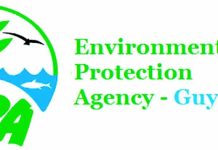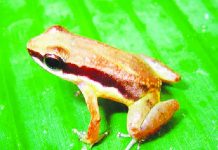Agriculture is the science or practice of farming, which include cultivation of the soil for the growing of crops, and the rearing of animals to provide food, wool, and other products. As Guyana celebrates Agriculture Month, let’s explore the role of the Environmental Protection Agency (EPA) as it relates to the agriculture sector. This year, the theme for Agriculture Month is “Sustainable Agriculture for ensuring Food Safety and a Green Economy”.
Responsibility of the Forestry and Agriculture Programme Area
At the EPA, the Forestry and Agriculture Programme Area is responsible for ensuring the development of standards that seek to restore and reclaim degraded agriculture and forestry lands; prevent release of contaminants to these lands; and conserve and manage the associated resources. By conserving and managing agricultural and forestry resources, the Programme Area coordinates and implements activities in keeping with the Environmental Protection Act, Cap 20:05. Some of these activities are: authorisation of developmental projects in the forestry and agriculture sectors; ensuring monitoring and compliance; and responding to complaints related to agricultural and forestry operations. EPA is committed to a strong partnership with the agricultural community to assist in fulfilling its mission of protecting human health and the environment.
Activities that require environmental authorisation include:
• Poultry processing;
• Food processing plants (including meat, fish/seafood, and fruits);
• Milk-based industries;
• Sugar manufacture and refining;
• Rice-processing plants;
• Livestock husbandry and production (> 500 heads of poultry, > 500 heads of swine); and
• Mariculture/aquaculture facilities.
Waste and the agricultural sector
Agricultural wastes are generally defined as the residues from the growing and processing of raw agricultural products such as fruits, vegetables, meat, poultry, dairy products, and crops. Agricultural wastes include crop residues, weeds, leaves, litter, sawdust, forest waste, and livestock waste. Land, air, water and noise pollution are inevitable within the agriculture sector; as such, the EPA is here to ensure that guidelines are in place so that these wastes do not produce pathogens and transmit diseases between animals, humans, and the environment. The guidelines, which include those for swine and poultry rearing, can be accessed on the EPA website http://www.epaguyana.org/epa/.
ONE MIGHT ASK: WHAT ARE THE REQUIREMENTS TO OBTAIN AN ENVIRONMENT PERMIT?
● An application form for Environmental Authorisation
● Identification of the permit applicant (National ID Card, passport).
● Proof of land ownership (transport, lease or other agreement with the land owner or occupier, or acknowledgement of application for Lease of State Lands from the Guyana Lands & Surveys Commission).
● Map showing surrounding land uses, identification of receiving water(s), and the location of any existing or proposed intake and discharge structures, and the location of any discharge.
● Site Plan showing the layout of the operation.
● Project description (summary).
● Business registration/certificate of incorporation (if applicable).
● Any other information which the Agency may require under the Environmental Protection Act, 1996, or the Environmental Protection (Authorisation) Regulations, 2000.
REMEMBER: THE ENVIRONMENT IS EVERYBODY’S BUSINESS. HELP US TO HELP YOU.
Reference
https://www.sciencedirect.com/topics/earth-and-planetary-sciences/agricultural-waste
https://www.epa.gov/regulatory-information-sector/agriculture-sectors-crop-naics-111-and-animal-naics-112











